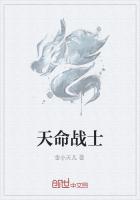The coal is entirely consumed and only its value enters into the product, just as a part of the value of the machine, etc., enters into it. Finally, the labourer remains as independent vis-á-vis the product, the copper, as the machine; except that the value which he produces by means of his labour is now a component part of the value of the copper. Hence in this illustration not a single constituent of productive capital changes "masters,"nor is any of them circulated further, because none of them enter materially into the product. What becomes of the circulating capital in this case?
According to Adam Smith's own definition the entire capital employed in a copper mine consists of fixed capital and nothing else.
Let us take on the other hand a different industry, one which utilises raw materials that form the substance of its product, and auxiliary materials that enter into the product bodily and not only as so much value, as is the case with fuel coal. The product, for instance the yarn, changes hands together with the raw material, the cotton, composing it, and passes from the process of production into that of consumption. But so long as the cotton functions as an element of productive capital, its master does not sell it, but processes it, has it made into yarn. He does not part with it. Or, to use Smith's crudely erroneous and trivial terms, he does not make any profit "by parting with it, by its changing masters, or by circulating it." He does not permit his materials to circulate any more than his machines. They are fixed in the process of production, the same as the spinning machines and the factory buildings. Indeed, a part of the productive capital must be just as continually fixed in the form of coal, cotton, etc., as in the form of instruments of labour. The difference is only that for instance the cotton, coal, etc., required for one week's yarn production, are always entirely consumed in the manufacture of the weekly product, so that new cotton, coal, etc., must be supplied in their place; in other words, these elements of productive capital, although remaining identical in kind, always consist of new specimens of the same kind, while the same individual spinning machine or the same individual factory building continues its participation in a whole series of weekly productions without being replaced by a new specimen of its kind. As elements of the productive capital all its constituent parts are continually fixed in the process of production, for it cannot proceed without them. And all the elements of productive capital, whether fixed or circulating, equally confront, as productive capital, the capital of circulation, i.e., commodity-capital and money-capital.
It is the same with labour-power. A part of the productive capital must be continually fixed in it, and it is the same identical labour-powers, just as it is the same machines, that are everywhere employed for a certain length of time by the same capitalist. The difference between labour-power and machines in this case is not that the machines are bought once and for all (which is not so when they are paid for in instalments), while the labourer is not. The difference is rather that the labour expended by the labourer enters wholly into the value of the product, while the value of the machines enters only piecemeal.
Smith confuses different definitions when he says of circulating capital as opposed to fixed: "The capital employed in this manner yields no revenue or profit to its employer, while it either remains in his possession or continues in the same shape." [Vol. II, p. 254.] He places the merely formal metamorphosis of the commodity, which the product, the commodity-capital, undergoes in the sphere of circulation and which brings about the change of hands of the commodities, on the same level as the bodily metamorphosis, which the various elements of productive capital undergo during the process of production. He indiscriminately jumbles together the transformation of commodities into money and of money into commodities, or purchase and sale, with the transformation of elements of production into products.
His illustration for circulating capital is merchants' capital, which is converted from commodities into money and from money into commodities --the change of form C---M---C pertaining to the circulation of commodities.
But this change of form within the circulation signifies for the industrial capital in action that the commodities into which the money is reconverted are elements of production (instruments of labour and labour-power), that, therefore, the change of form renders the function of industrial capital continuous, renders the process of production a continuous one, or a process of reproduction. This entire change of form takes place in circulation.
It is this change of form that brings about the real passage of the commodities from hand to hand. But the metamorphoses gone through by productive capital within its process of production are on the contrary metamorphoses that pertain to the labour-process and are necessary to transform the elements of production into the desired product. Adam Smith clings to the fact that a part of the means of production (the instruments of labour proper) serve in the labour-process ("yield a profit to their master,"as he erroneously expresses it) without changing their bodily form and wear out only by degrees; while the other part, the materials, change and by virtue of this very change attain their destination as means of production.
This difference in the behaviour of the elements of productive capital in the labour-process forms however only the point of departure of the difference between fixed and non-fixed capital, not this difference itself.
That follows from the fact alone that this different behaviour exists in equal measure under all modes of production, capitalist and non-capitalist.















